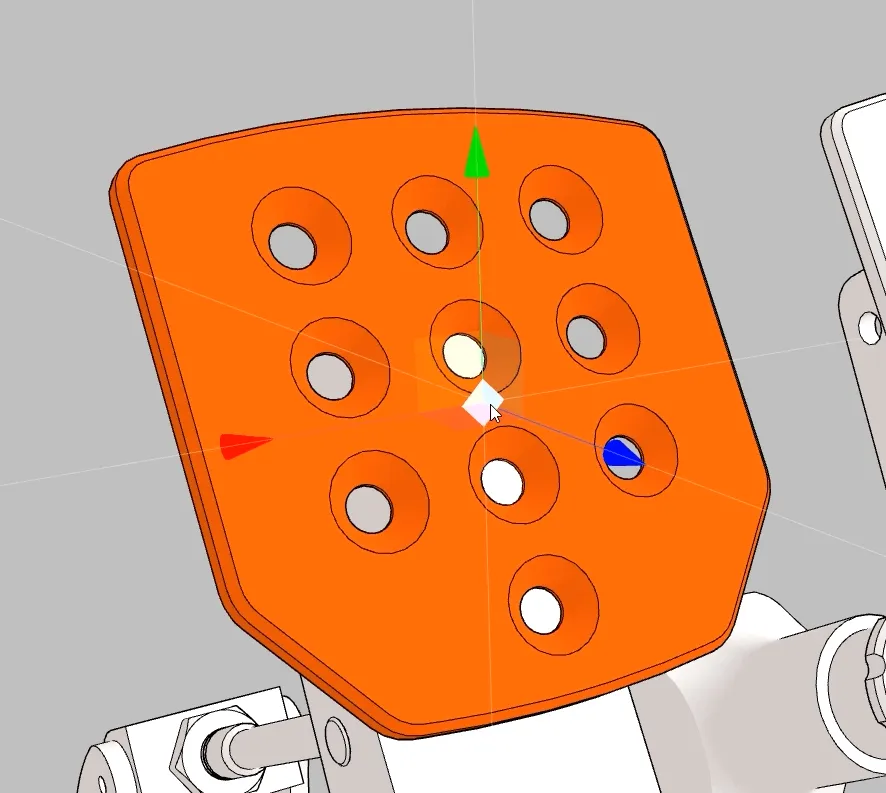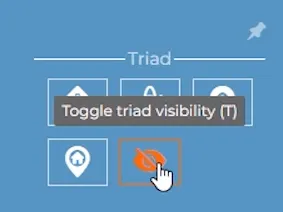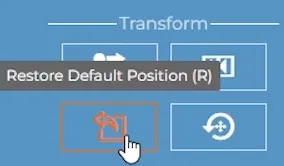There are several tools available to help with this, as well as some handy shortcuts enabling you to get the job done fast.
Translate
When you select a 3D object in Cadasio the triad is automatically shown in translate mode.

Translate mode allows you to move 3D objects in the X, Y & Z directions within the scene.
On the Triad, there are several coloured controls. If you left click and drag an arrow, you can transform a component in either direction along that axis. Between any two arrows you will also see a corresponding plane. When you left click and drag it allows you to move a component planar between any two axis. There is also a Centre Ball. When this is selected you can free drag a component parallel to the screen.
Rotate
The Triad can also be used in rotate mode. To toggle between translate and rotate, press the Alt key.

When in rotate mode, there are three ways to manipulate the selected object. If you click and hold the red, green or blue ring you will rotate the selected object along a specific axis. If you click and hold the empty space within the triads sphere this will free rotate the selected object. Clicking and holding the yellow circle will rotate the component around an axis normal to the screen.
You can control the angle of rotation by using the plus and minus keys to adjust the Snap Level Increment. It's worth pointing out that both rotate and translation can be done on multiple components at the same time if you need to, simply multi select the objects you want to move.
Triad Orientation
By default the triad orientates itself to the Scenes coordinate system but you can also move or rotate a component relative to its own coordinate system. To toggle which coordinate system the triad is using, select a 3D object, hover over the centre of the triad and double click the left mouse button.
Shortcuts
Shortcut keys are the quickest way of working within Cadasio, however all shortcuts can also be prompted from the Transform tools slide out menu.

Changing the Triad Position on a component
Triad Placement Mode is ideal for when you need to move a 3D object in a direction that isn’t aligned with either the Local or World axis. It can be prompted from the tools slide out menu or by pressing P when a 3D object is selected. When in Triad Placement Mode, you can position the triad elsewhere in the scene. Manually by clicking anywhere, by holding shift and snapping to the origin of an object, holding alt and snapping to the centre of an object, or by holding ctrl and snapping to an edge. Once positioned, the triad behaves in the same way, so, for example, to rotate the object, simply drag the rings on the rotate tool. If you change the triads position, Cadasio will conveniently remember it the next time you select that part, and you can toggle between the default location and the changed position using the icon on the transform slide out menu.
Restore
Often you will move a component and then want to position it back where it was previously. This may be its previous position the last time the step was updated, or it may be the default position within the project. Each of these can be easily achieved by using the restore step position option or the restore default position option. Restore default position restores the position of an object to where it was when the project was first created - this is a commonly used feature and can also be achieved with the keyboard shortcut of R.

Restore position from step restores the position of an object in two different ways. A left click allows you to restore the position from another step within the project, whereas a Right click, or the keyboard shortcut of shift R, restores the position to the last saved position within the current step -this restore point will get updated every time the step is updated.



.webp)




